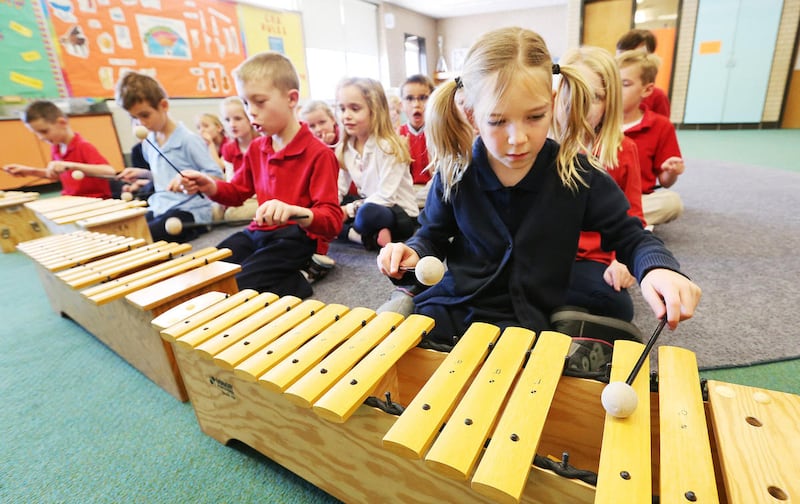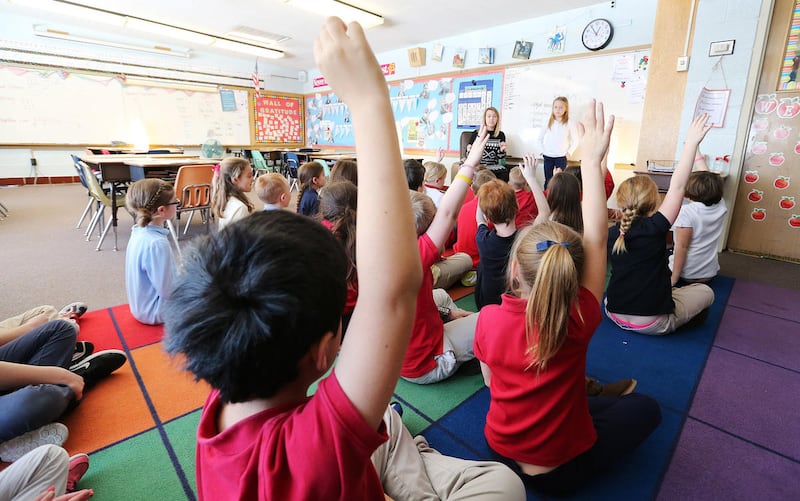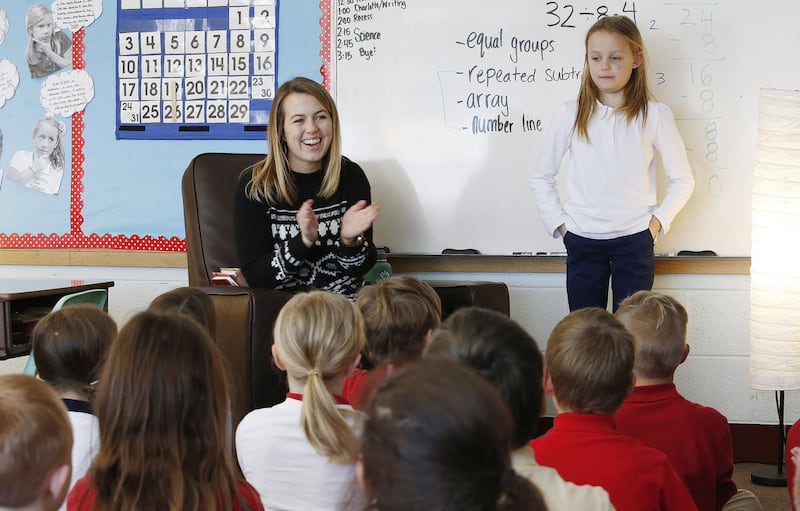SALT LAKE CITY — State lawmakers hope to give Utah students a better chance for quality learning and academic achievement through a more equitable distribution of funding next year.
That is the goal for members of the Public Education Appropriations Subcommittee, which began the process of setting the budget for Utah's public school system Tuesday.
Equity was also a focus in the Senate Education Committee, which voted unanimously to support a bill that would increase funding for charter schools by $36 million in order to more closely resemble the funding distribution model used for district schools.
Sandy Republican Steven Eliason, House chairman of the Public Education Appropriations Subcommittee, said Utah has made significant strides in boosting school dollars in recent years, and it is one of a small handful of states that hasn't faced litigation over the equitable distribution of education funding. But "gross inequities" still exist that can contribute to academic struggles, he said.
"Though we take great pride in allocating our money toward districts equitably, unfortunately, that money does not always end up at the individual schools on an equitable basis," Eliason said. "We need to make sure children are being treated equally around the state."
Utah uses the weighted pupil unit, commonly called the WPU, in distributing state dollars on a per-student basis. Schools are given the flexibility to use WPU dollars on a variety of local needs, such as teacher salaries, curriculum, buildings and others.
Last year, educators expressed dissatisfaction with a 4 percent increase to the WPU after Gov. Gary Herbert recommended a 6.25 percent increase, a difference of more than $50 million. But overall education funding increased by almost 10 percent, according to Draper Republican Howard Stephenson, Senate chairman of the Public Education Appropriations Subcommittee.
Even though the WPU brings in flexible money for schools and is seen as a primary tool in addressing student funding shortfalls, legislators say education leaders should consider the broad array of funding sources beyond the WPU as additional remedies. However, legislative leadership has indicated that another increase to the WPU is likely this year.
"During this year, we want to focus on adequate funding for education, and we need to represent that more than just in the WPU," Stephenson said. "I'm hoping that we can include the entire optics of what we're doing, and not just be focusing on the WPU."
Other funding requests this year include $100 million for a statewide one-to-one student technology program, $30 million for professional learning for teachers and $17.5 million for optional extended-day kindergarten, among numerous others.
The Public Education Appropriations Subcommittee is scheduled to make its final recommendations on the education budget by Feb. 11.
Charter school equity
SB38 is an attempt to improve funding equity for charter schools. Charters would end up with an additional $36 million under the bill, boosting funding for the 68,000 students now attending the alternative public schools.
School districts are required to give a portion of their property tax revenues to charter schools, which do not have taxing authority. Utah provides supplemental funding, called the state guarantee, to school districts that have a high taxing effort but low levels of revenue.
Charters, however, have been excluded from the state guarantee, shorting them an estimated $500 per student, or more than $30 million per year overall, according to State Charter School Board Chairman Howard Headlee.
But the bill, sponsored by Stephenson and developed by a task force of educators and lawmakers, would include the supplemental funds going forward as charter schools are given state funding allocations. Districts would not be required to divert additional funds for charters.
"It's surprising for people to realize that charters have been shortchanged $36 million. We have a lot of students now, though; 10 percent of our students are in charter schools, so I guess it adds up," Stephenson said. "When we're not treating our children equally with equitable funding, then we're basically saying that we prefer some of our children and their education quality to others."
Angela Stallings, associate superintendent of policy and communications at the Utah State Office of Education, said the reason the state guarantee funds weren't given to charters is because current statute doesn't allow for it. But SB38 makes the necessary revisions.
"It wasn't that the State School Board or (the state education office) weren't following the law," Stallings said.
SB38 has been widely supported by the charter school community. Royce Van Tassell, executive director of the Utah Association of Public Charter Schools, said he was pleased with the efforts of education leaders and lawmakers last year that looked at revising the current policy to bring more equity to charter school funding.
"This goes a long way towards closing the gap that has existed for obviously far too long in terms of funding between charter schools and school districts," Van Tassell said.
Separate from the bill, Utah charter schools will be transitioning to a new model for calculating funding tied to student enrollment. Student funding for charters has historically been based on an Oct. 1 headcount, which sets funding levels for the rest of the school year. District schools, however, use an average daily membership model, allowing funding amounts to be adjusted periodically.
Charters will adopt the same model used by district schools in the coming school year.
Email: mjacobsen@deseretnews.com
Twitter: MorganEJacobsen












